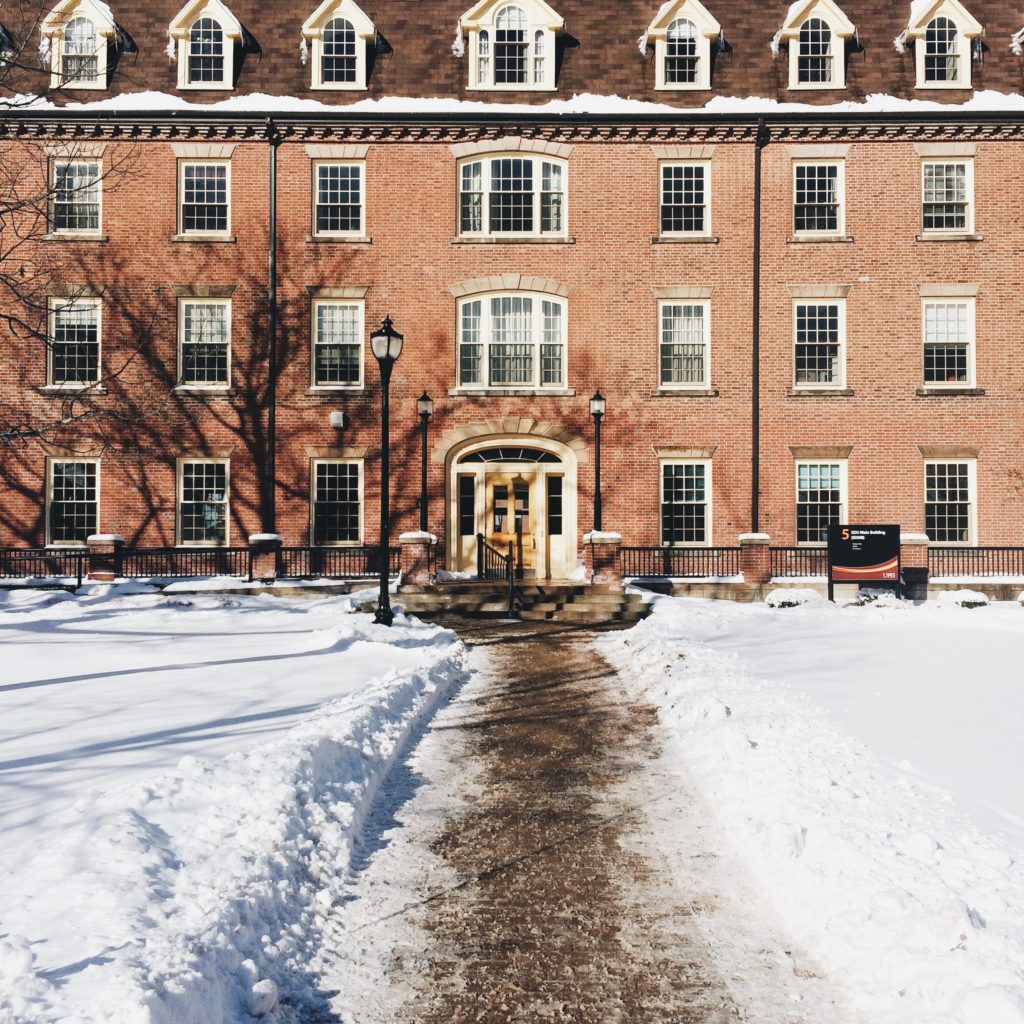This article was first published on the seventh of March, 2013 by Bob Deziel.
Walking to class on a bitter cold winter day, you may think to yourself: “Boy, I wish I didn’t have to be outside right now. I wish there was a way to get to class without having to drape myself in four separate layers of clothingâ€.
We’ve all been there.
Perhaps you came up with an idea all on your own to create some sort of tunnel system on campus. This would enable you to get to any building without having to step one foot outside.
Though you may not know it, tunnels such as these already exist. Buried under the walkways and grass of the UPEI campus there are tunnels. Access tunnels, which are tall and wide enough for people to fit through, and connect to almost every building across campus.
Figure 1: A map of the UPEI campus, with an approximate representation as to the location of the tunnels across campus marked in blue.
Rumors as to the purpose of these tunnels, their extensiveness, and their past history are as common as they are entertaining. One of these rumors is that they are a form of bomb shelter, having been constructed in the early 1950s as a last resort in case of a nuclear attack. Others believe that these tunnels connect to many buildings across the city.
I was also tasked with finding out the validity of the “rumor†that “mole people†exist within the tunnels.
To get some answers, I sat down with the director of facilities management, Greg Clayton.
First off, to get rid of one of the more believable myths, the tunnels were not intended for use as personal bomb shelters. They were constructed around 1972, at a time when there was no AVC, no Student Center (our student union building was literally a barn), and no KCI.
“When this building [central utility building #2 on map] was constructed in ’72, they connected to all of the buildings at the time.†says Greg.
“At the time there was no one hour fire separation which is essentially a masonry wall. So, the tunnel went right in to the building. So you know, people were able to access the tunnels in certain buildings even when they weren’t supposed to. It was just a place you could go.â€
As well, the tunnels DO connect with other buildings in Charlottetown, but not in a way you would suspect. The main purpose of the tunnels is for transporting hot water, power, and our precious internet cables from the central utility building to other points on campus. Some of this hot steam we actually get piped in from the city from PEI Energy Systems, which connects to our buildings via the tunnels.
How big are these tunnels?
According to Mr. Clayton “The size of them are mainly six foot by six foot. These would be the main branches, and then the smaller branches would be a little smaller going off into the buildings.â€
This seems somewhat navigable, but walkways they are not.
Figure 2: Inside the tunnels.
The tunnels are filled with wires, pipes, and other obstructions. Meaning that using them as through-fare for getting from building to building would be a hazard. In fact, access is denied not just by the university but by the province. To perform maintenance within the tunnels requires “Confined Space Trainingâ€, which is mandated by the province through the Occupational Health and Safety Act, otherwise known as the “Killjoy†act.
How does someone find out where these tunnels are on campus? Simple, look for the yellow posts and exterior vents!
Figure 3: Exterior access behind Memorial building. These vents were constructed in the early 2000s to alleviate moisture problems in the tunnels.
Figure 4: Yellow posts dot the campus, but what do they mean? They’re pointing to manholes with direct access to the tunnels!
Each of these structures connect directly to the tunnels. As well, some building maps located across campus appear to show corridors that go from inside the building to the outside without a picture of a door frame. Typically, these go directly to the tunnels, but access is blocked by the aforementioned fire walls.
The last point of clarification: mole people. Do they exist, Mr. Clayton?
“Um, I’ve never heard of a report of a mole person in the tunnel so if they do exist they’re hiding well. I wouldn’t put money on it [their existence]â€.
Though there was no outright denial, I’ll take his word on it.
